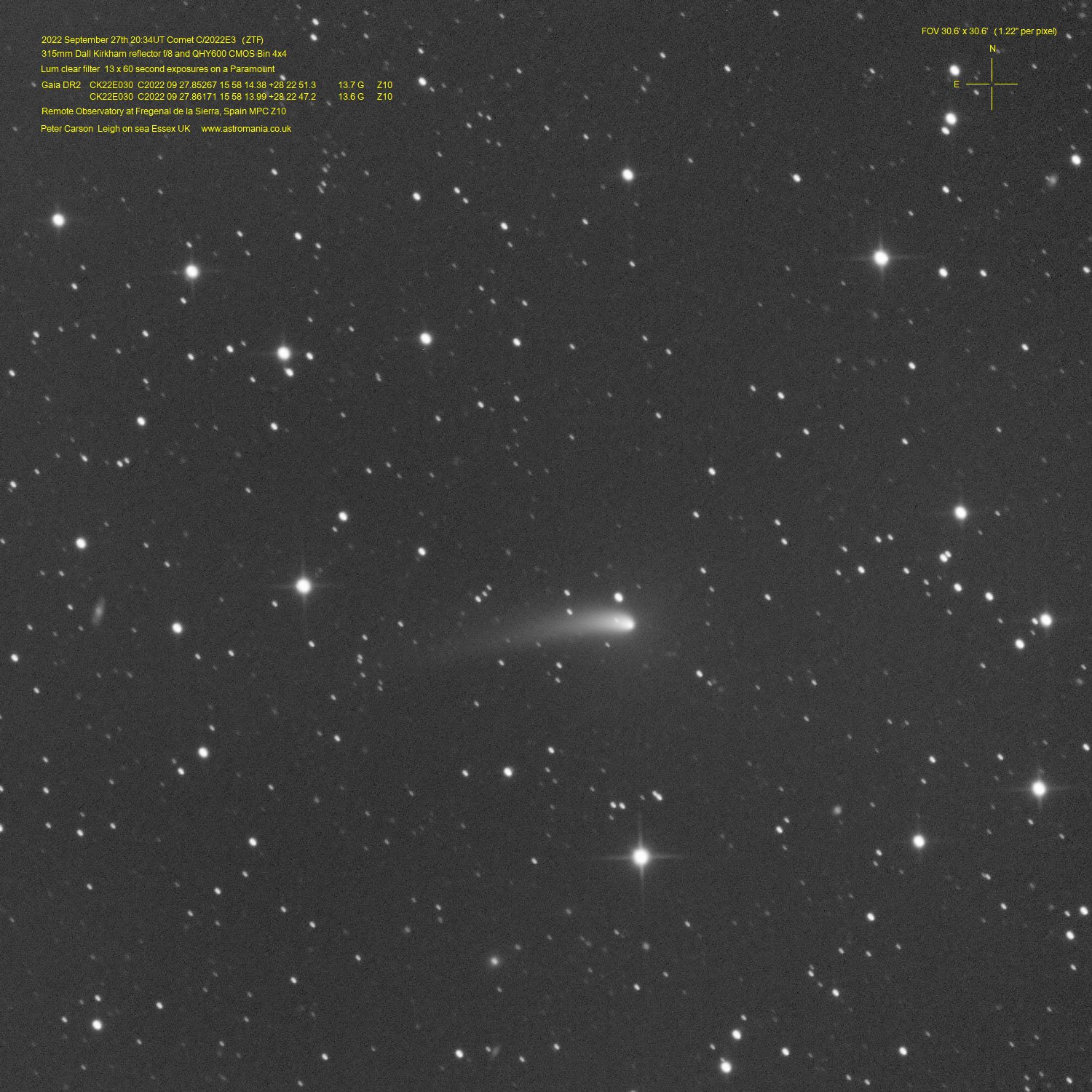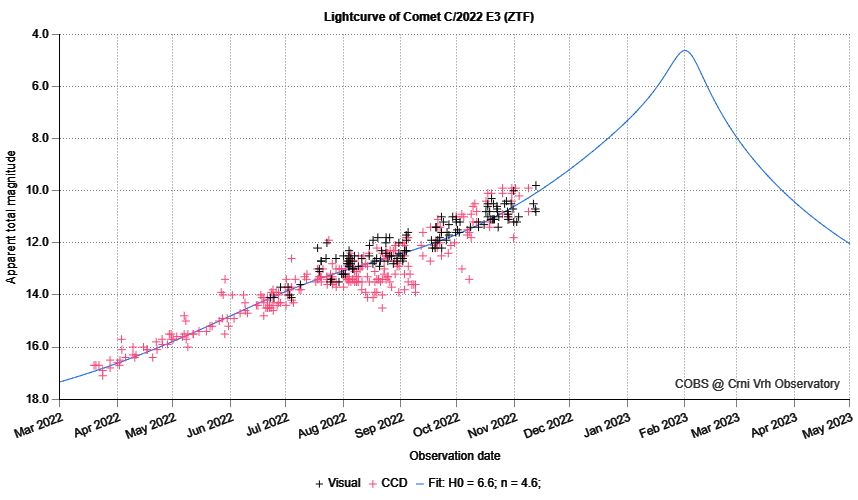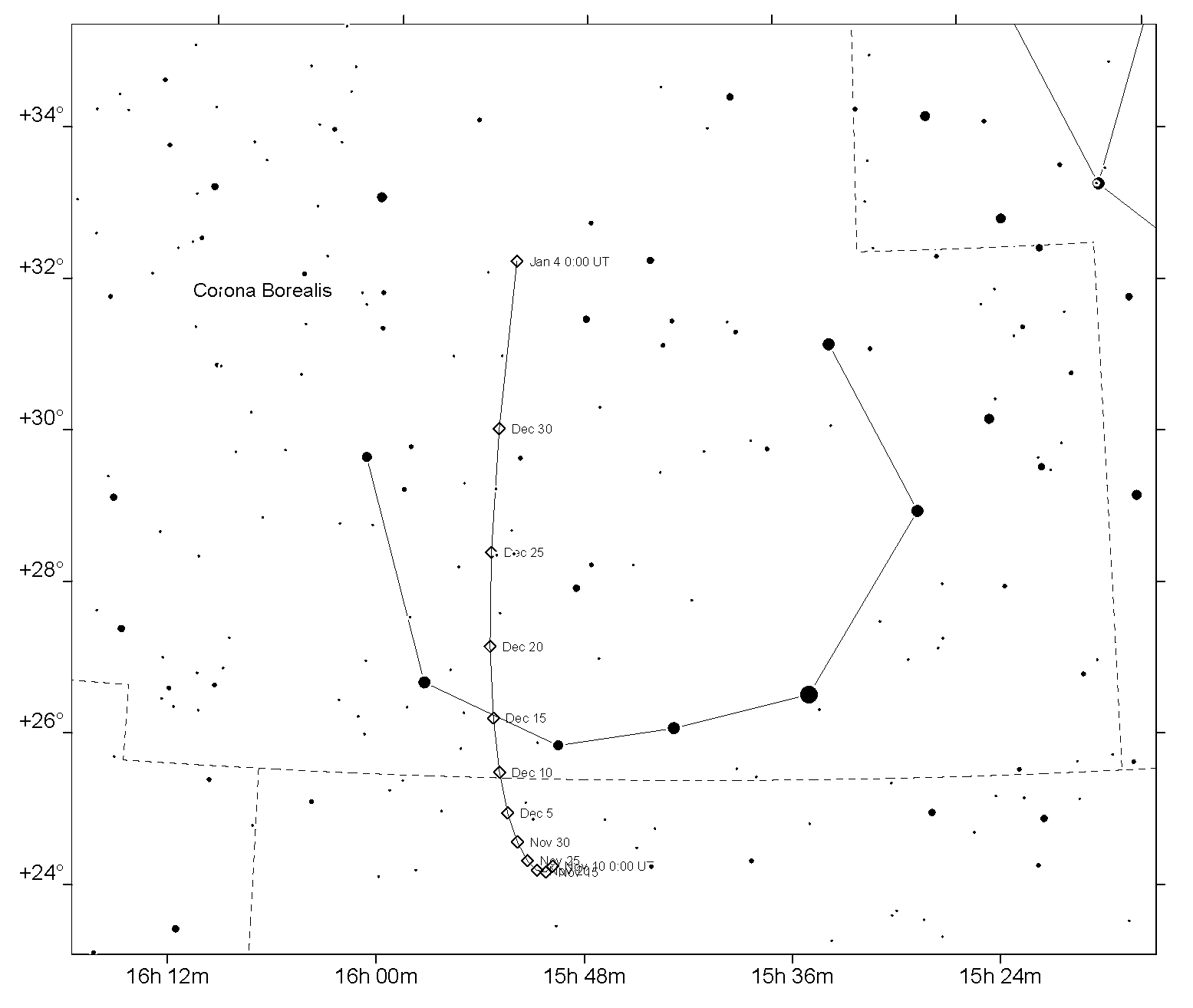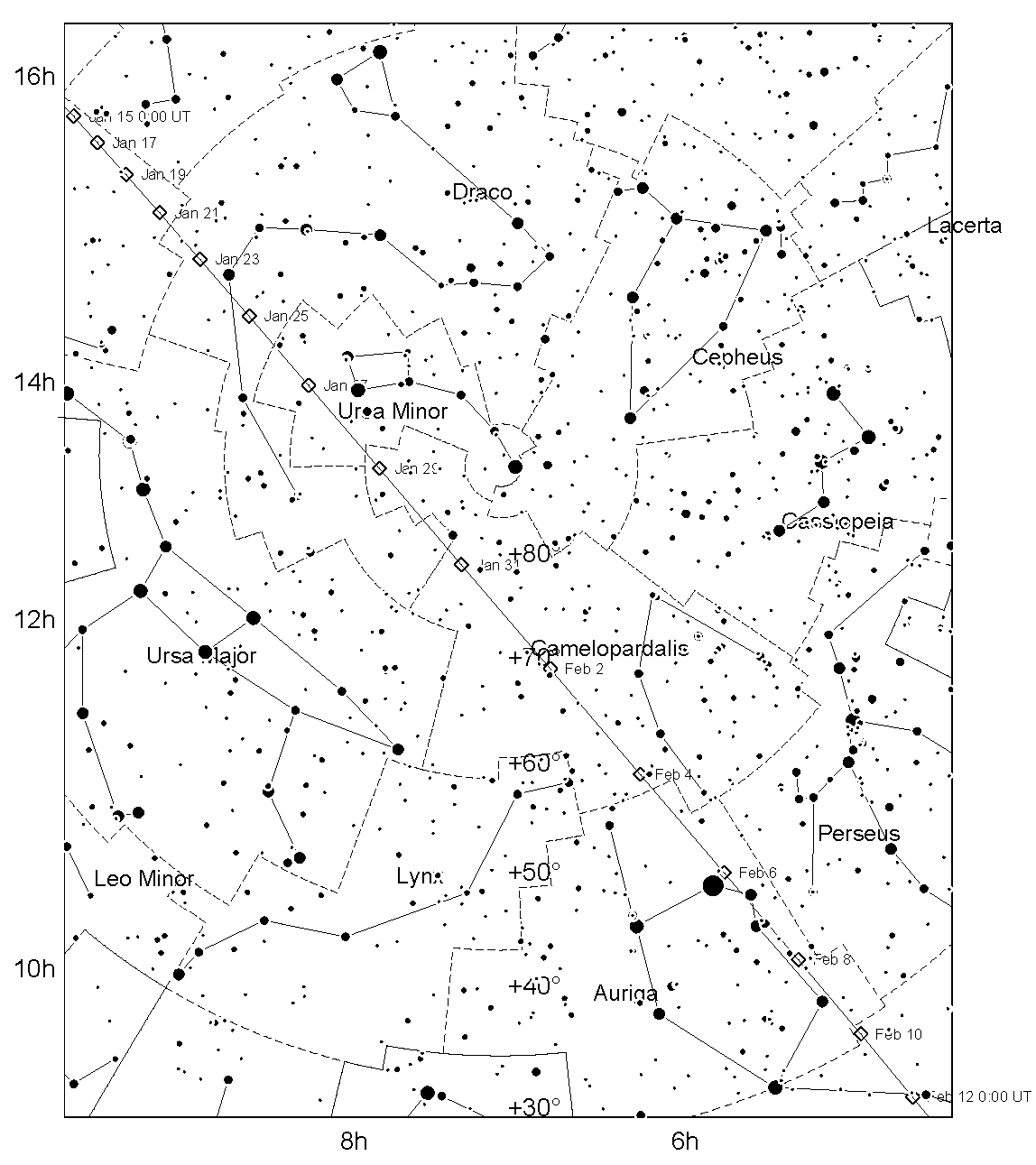2022 December 3
Comet of the month: C/2022 E3 (ZTF)

It is while since we have had a naked-eye comet but C/2022 E3 (ZTF) might just cross that threshold from dark sites at the end of next January. As always with comets any brightness prediction comes with a big potential error so it is important to observe it to see what it will actually do. The above image from Peter Carson shows the comet as it appears at the moment. It has a reasonably condensed coma with a curving tail to the east.
This comet was discovered as an apparently asteroidal object on 2022 March 2 (CBET 5111). It was detected by the Zwicky Transient Facility (ZTF) using the 1.2-m, f/2.4 Schmidt at Mount Palomar. At the time of discovery it was 5 au from the Sun and a 17th magnitude object in Aquila. Other observers reported cometary activity shortly after the discovery. The initial orbit showed that the comet would come to perihelion on 2023 Jan 12 at a distance of 1.1 au from the Sun and that it would make a close approach to the Earth in early 2023 February when it would be at a distance of 0.28 au and could reach 6th magnitude. At that time it will be moving very rapidly across the sky and will be very well placed for us since it tracks under the pole.

Throughout 2022 the comet has been slowly brightening and it is now (mid 2022 November) approaching 10th magnitude. It is currently moving very slowly from Serpens into Corona Borealis and has been an evening object for most of the year. Corona is now sinking into the evening twilight and the comet will be better seen as a morning object from late November. The magnitude so far has been very well behaved and we expect the comet to brighten rapidly now, reaching 8th magnitude by the end of the year and possibly 5th magnitude by early 2023 February when it will be large, diffuse and moving rapidly across the sky. Finder charts for November/December and January/February are here and here.
There are lots of images in our online archive here. The latest ones show a curving tail to the east which has been growing over the past few months.
The best views of the comet will be when the sky is free of a bright Moon. The Moon is new on November 23, December 23 and January 21 but take every opportunity to observe the comet when the winter weather allows. Please send observations to the Comet Section (instructions for submitting images are here) and to COBS. Remember to register as a BAA observer with COBS so that I can easily access your observations at the end of each month.


| The British Astronomical Association supports amateur astronomers around the UK and the rest of the world. Find out more about the BAA or join us. |
